Contemporary gallery designs are inspirational – but the game has changed
The competition to design a new contemporary art gallery for Adelaide has reached a milestone, but to what end?
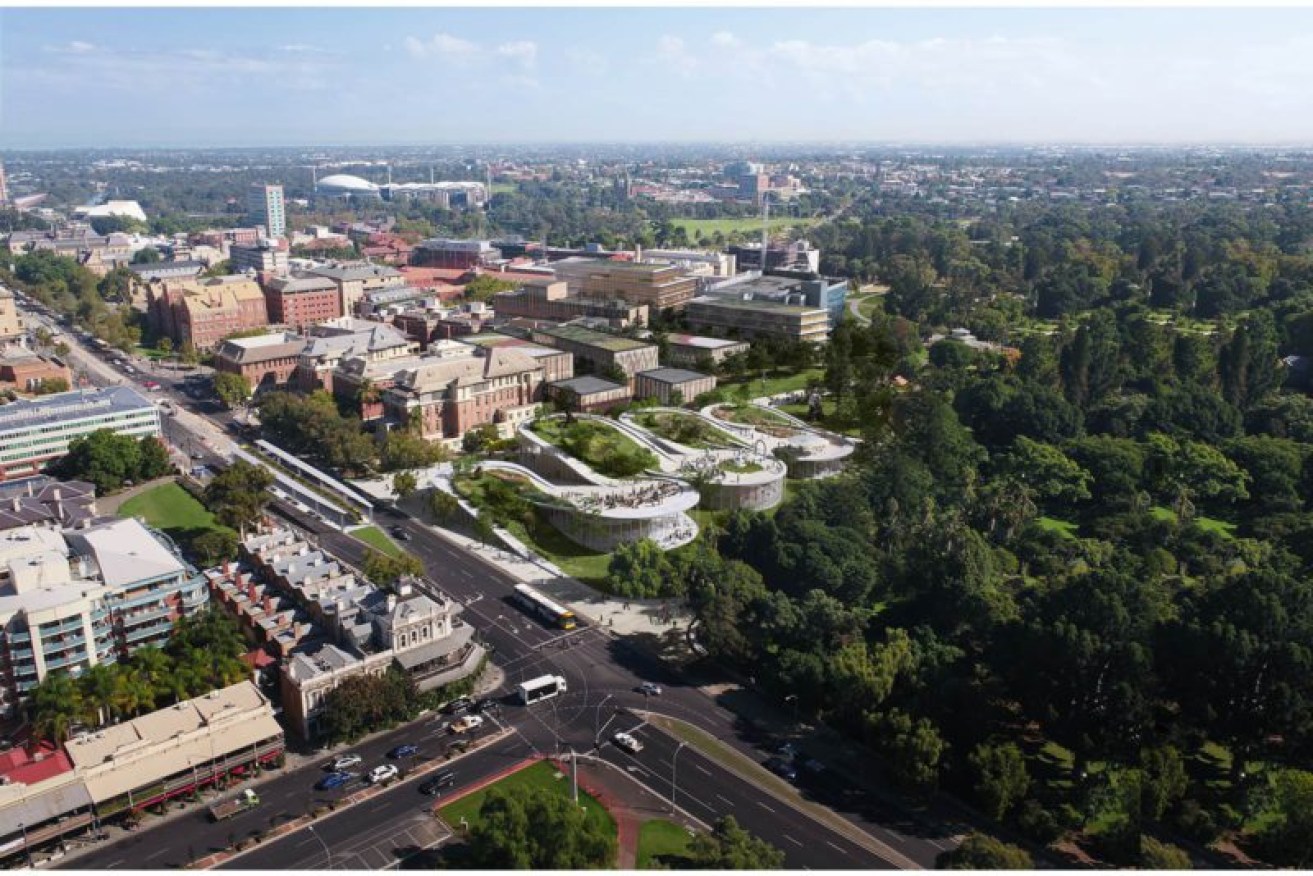
Design for Adelaide Contemporary by BIG – Bjarke Ingels Group and JPE Design Studio with United Natures, Arketype, BuildSurv, Virtual Built, Future Urban Group, Lewis Yerloburka O’Brien, Marijana Tadic, Erica Green, Peter Dungey, Brian Parkes and Lindy Lee
The Adelaide Contemporary International Design Competition is now open for public view at the Art Gallery of South Australia. An outstanding example of what can be achieved by combining international perspective with local talent, the most noteworthy submissions pay homage to the park lands and Botanic Gardens while remaining fresh, innovative and forward-facing (scroll down for more images).
However, no matter how thoughtful and well-executed some of these designs may be, we need to remember they are a direct response to a superseded October 2017 brief for the AGSA-driven Adelaide Contemporary.
The situation in May 2018 is quite different. The Marshall government has pledged to build a National Aboriginal Art and Culture Gallery on this very same site. The function of such a building will differ vastly from the western curatorial vision central to Adelaide Contemporary’s strategy.
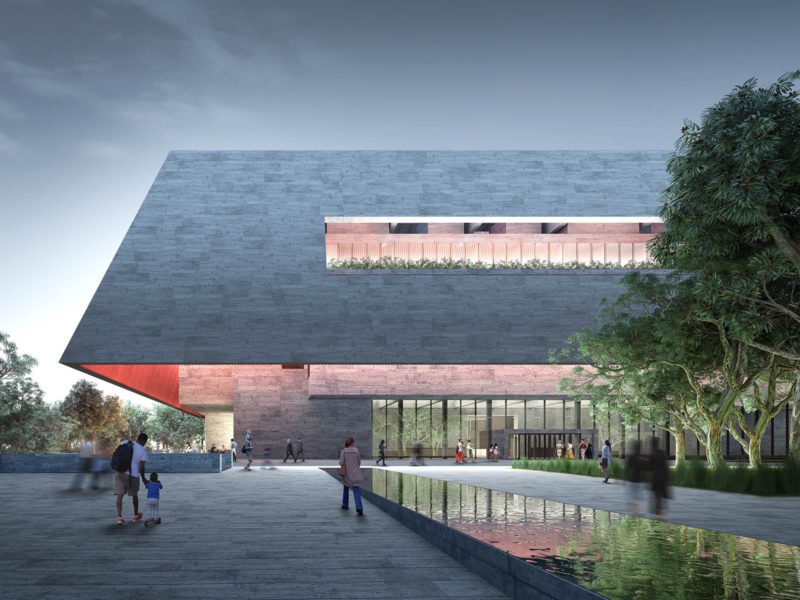
Design by Adjaye Associates and BVN with McGregor Coxall, Steensen Varming, Plan A Consultants, Barbara Flynn, Yvonne Koolmatrie, Aurecon Group and Front Inc
From the requirements of secret/sacred stories to those of men’s/women’s business, the challenge of comprehensively housing and telling a 60,000 year Aboriginal story will necessitate a fundamentally different plan. We need not only a gallery but a keeping place; arms open not only for tourists but towards Aboriginal peoples across the land.
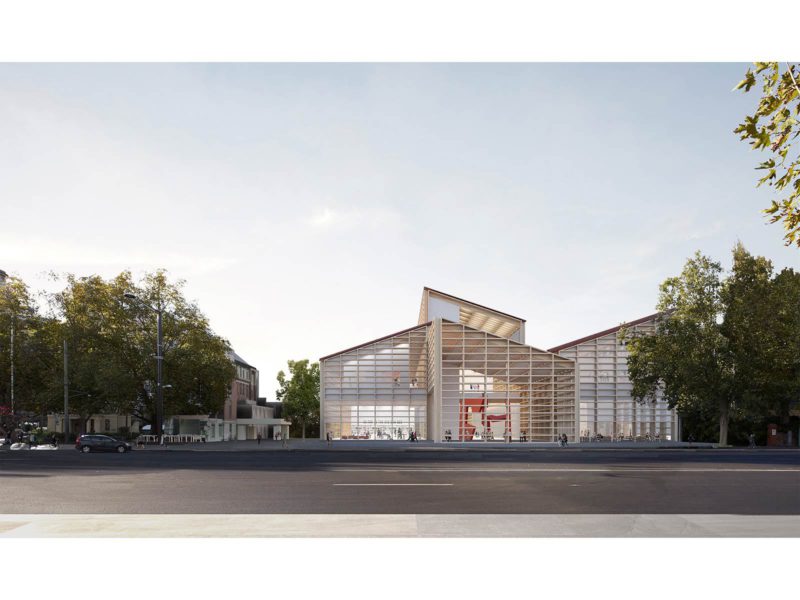
Design by David Chipperfield Architects and SJB Architects with Jane Irwin Landscape Architecture and Arup Lighting
If we manage to get this right we’ll end up with a place of reconciliation, both an intercultural and intergenerational space where Aboriginal people are empowered to present their stories outwards whilst nurturing and preserving them within.
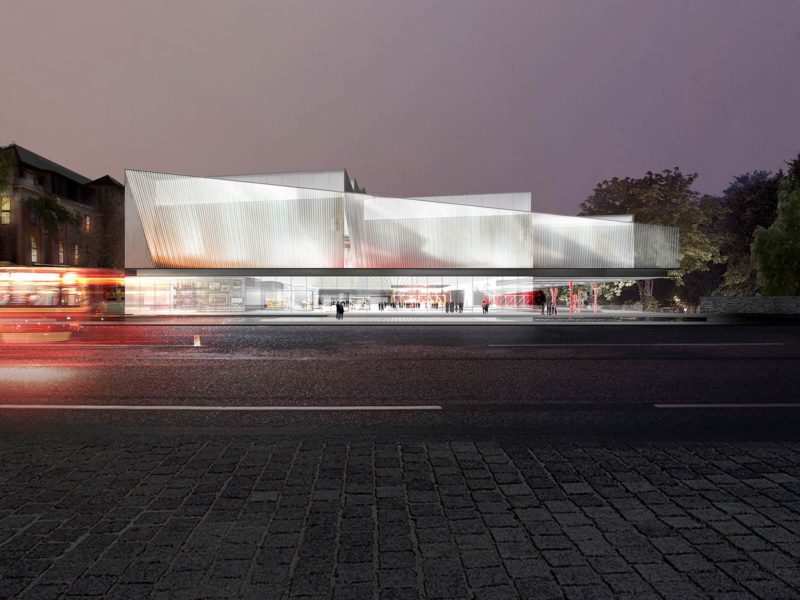
Design by Diller Scofidio + Renfro and Woods Bagot with Oculus, Pentagram, Right Angle Studio, Klynton Wanganeen, Dustin Yellin, Studio Adrien Gardère, Australian Dance Theatre, Deloitte, Ekistics and Katnich Dodd
These are not concepts that can be jammed into another project’s designs. A simple rebadge will not do.
We should not, however, consider today’s competition to be in vain. The serpent-in-the-landscape form of Copenhagen-based Bjarke Ingels Group (see main image above) is an example of a proposal both empathetic to the site and harmonic with Aboriginal iconography. Such ideas and teams should not be put to waste, but rather encouraged to participate in the next stage of the process.
Serious thought now needs to be given to the structuring of the body that will take custodianship of the project as a whole. With AGSA and SAM set up to serve different goals, a continuation of the current trajectory foreshadows either exclusionary dominance by one or perpetual infighting between the two.
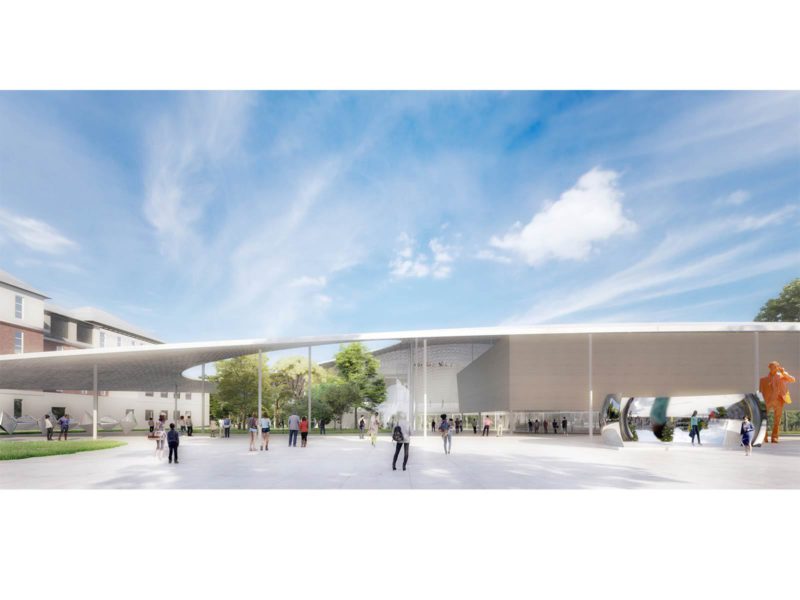
Design by Khai Liew, Office of Ryue Nishizawa and Durbach Block Jaggers with Masako Yamazaki, Mark Richardson, Arup, Irma Boom, Taylor Cullity Lethlean and URPS
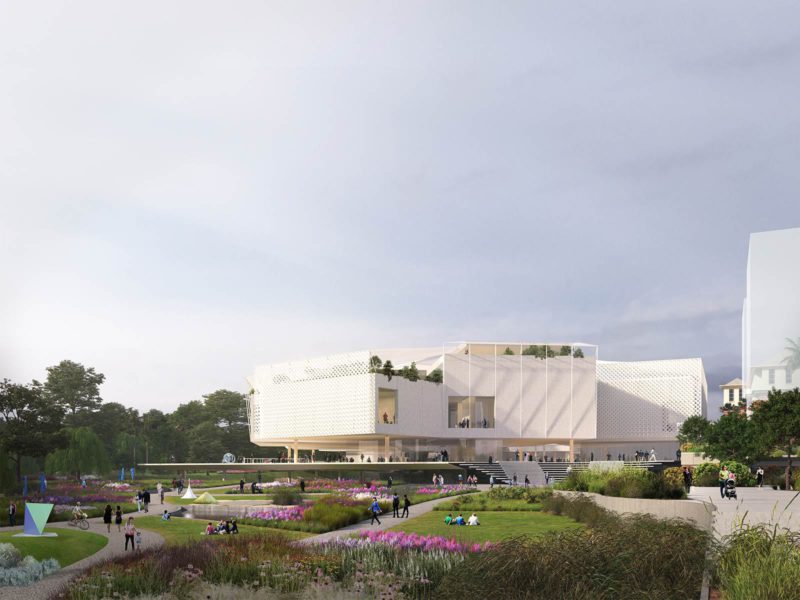
Design by HASSELL and SO-IL with Ali Cobby Eckermann, Arup, Australian Industrial Transformation Institute, Fabio Ongarato Design, Fiona Hall and Mosbach Paysagistes
A Stadium Management Authority example has been suggested as a possible starting point, but in order to truly realize a vision of repatriation and reconciliation we will need to arrive at genuine partnership with Aboriginal elders first. The resulting model will need to extend beyond Kaurna borders to be nationally inclusive, allowing cultural groups from across the continent to adopt this institution as their own.
So, as we enjoy the fruits of today’s design competition, we must remain conscious that the bulk of the effort is still to come. And while we can certainly draw inspiration from the ideas that have been presented, we must be mindful that they are not representative of what we now need to achieve.
Cillín Perera is a Harvard-educated Australian expat entrepreneur, philanthropist, photographer & art collector. His opinions are his alone and in no way represent the positions of the Art Gallery of South Australia or the South Australian Museum.




